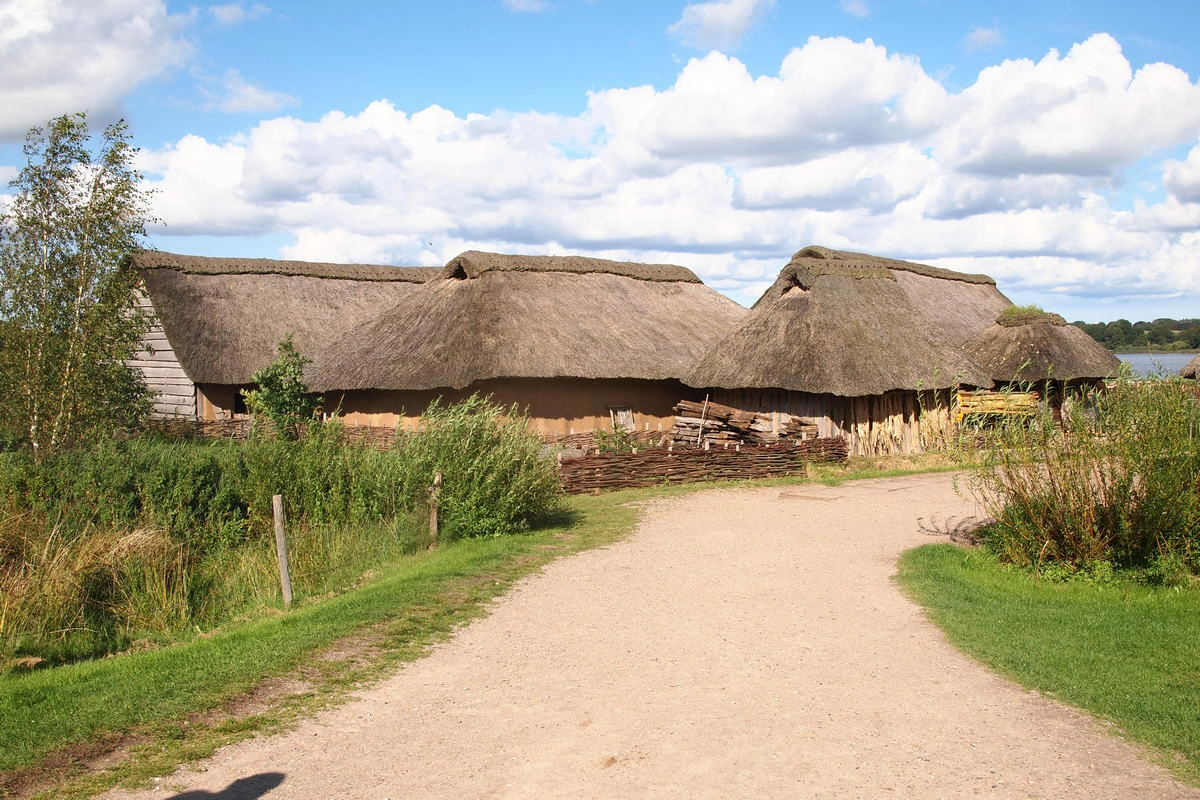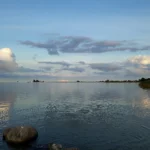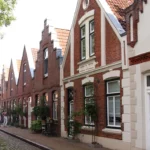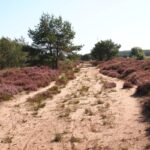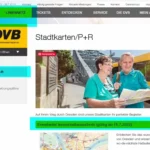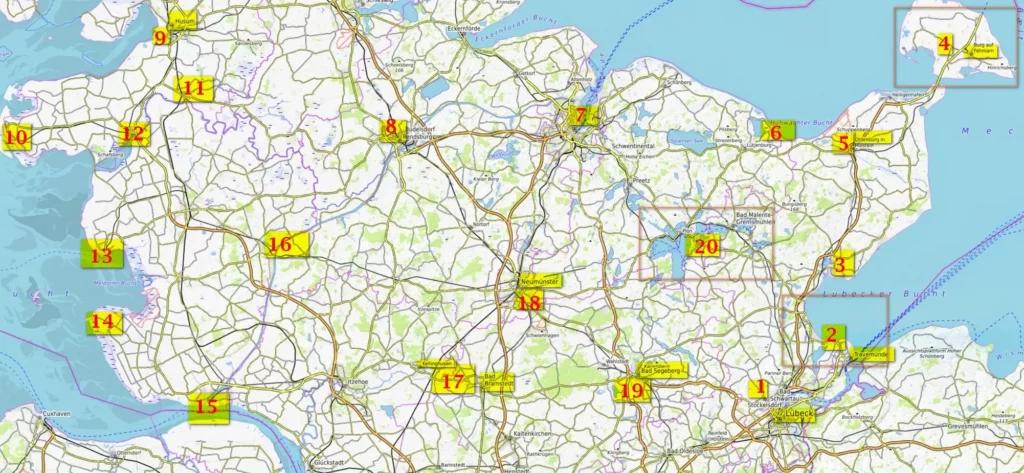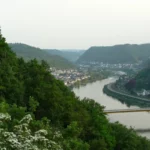Last Updated on 29/06/2024
Schleswig – settlement (or harbor according to other versions) on the Schlei (Sly). The location seems to be extremely advantageous: on the one hand, there is access to the sea, on the other, it is well protected. And the other sea is just a stone’s throw away. But the Sly Firth is not suitable for shipping, so Schleswig is more of a sleeping village rather than a large city.
Baltic Sea. Kappeln, Eckernförde, Sly Firth and everything in between
Travemünde – what to do
Lübeck old town
Wadden Sea Schleswig-Holstein: Büsum, Husum, Friedrichstadt
Eiderstedt Peninsula. Sankt Peter Ording
Luneburg Heath. Schneverdingen
Tourist Attractions Schleswig Holstein map
Bremerhaven attractions
North sea Germany vacation. Things to do
Schleswig
A little history
The Vikings, who had a large city – not exactly on the site of Schleswig, but nearby, already enjoyed an advantageous position.
Since the beginning of the Middle Ages, the Danes and Germans had fought for control of the region, but the Danes quickly won. From the 11th century, the Viking settlement finally collapsed, and medieval Schleswig became a trading center. However, this did not last long: the winding and shallow Sly Firth was not suitable for ships, which were becoming larger and larger.
The next period of prosperity is associated with the Dukes of Schleswig-Gottorp, who made Schleswig their capital. This period was short-lived: from the mid-16th to the early 18th century. After the Northern War, Schleswig passed to the Danish crown, lost its importance as a capital and became an administrative and judicial regional center.
Schleswig palace
As we see, the dukes left the city quite a long time ago. Although they managed to rebuild the old castle into a rather large palace, in Prussian times it was used as a barracks. Now the palace is occupied by an art and archaeological museum. From the point of view of the interiors, the only interesting things are a couple of nice halls with beautiful ceilings and a chapel. The most interesting exhibits include an ancient boat, paintings by Lucas Cranach and the Expressionists.
The palace is located on the outskirts of the city. You can walk there, but not close (2 km). City map – at the end of the topic.
The photo shows the palace from the observation deck of the cathedral (on the right). The palace looks best from a distance, especially from the descent from the highway, where you can’t stop to take a photo. Up close, it looks more like a big house.

Previously, there were also gardens around the palace – Duke Frederick III was passionate about botany. As befits a standard palace of this period, there were terraces with fountains and a long alley. Unfortunately, in Prussian times the terraces were used for cavalry training. At the end of the 20th century, it was decided to restore the garden almost from scratch, according to written sources. The restoration was completed by 2007.
In the middle of the terraces is a pavilion for the Gottorp Globe. Both, like the figure of Neptune in the pond, are reconstructions. The building and the globe were restored according to meager descriptions.
The Gottorp globe of the 17th century consisted of two parts: on the outside there was a globe, and on the inside there was an image of the sky (zodiac signs). At that time it was deservedly famous – about 3 meters in diameter, several tons of weight. It was possible to go inside. The mechanism set the sphere in motion. The globe was presented to Peter 1 and sent to St. Petersburg. There it was almost destroyed by fire in the 18th century, restored, captured by German forces during World War II and sent back after the war.
Please note: the gardens and globe are not open every day (not the same as the palace). So we couldn’t get inside.

Follow me
Schleswig old town
The most interesting part of the city is centered around the Sankt Petri Cathedral and the historical part of Holm.
Old town – view from the cathedral.
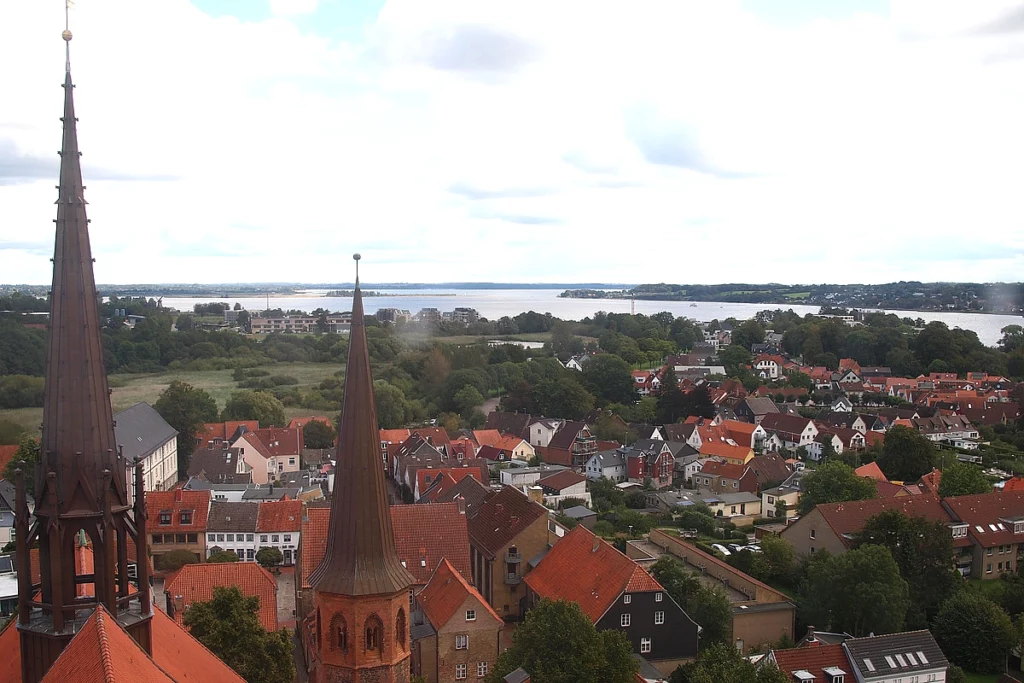

In other places of the city (Langestraße, Lollfuß, Friedrichstraße, Herrenstall, Gottorfstraße) there are also old buildings (usually from the 18th-19th centuries), but there is no point in spending time walking around them, because they are scattered in different parts of the city.
Cathedral of St. Peter (St.-Petri-Dom zu Schleswig)
The construction of St. Peter’s Cathedral in Schleswig took a long time: it began in the 12th century in the Romanesque style; barely having time to finish, they continued to improve it in the Gothic style until the 16th century. Finally, a neo-Gothic tower was added in the 19th century. As is usually the case in the north, the cathedral is built of brick, which gives it a certain gloominess. However, inside it is quite elegant. It’s definitely worth going inside to see the carved wooden altar by Brüggemann from 1521.
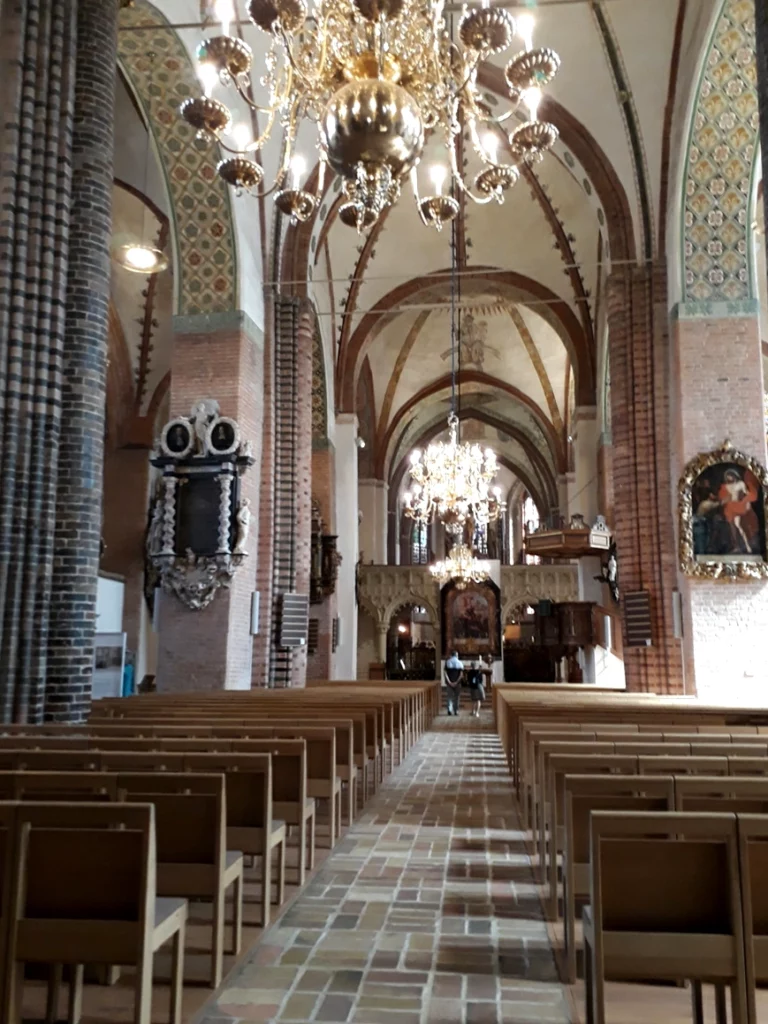
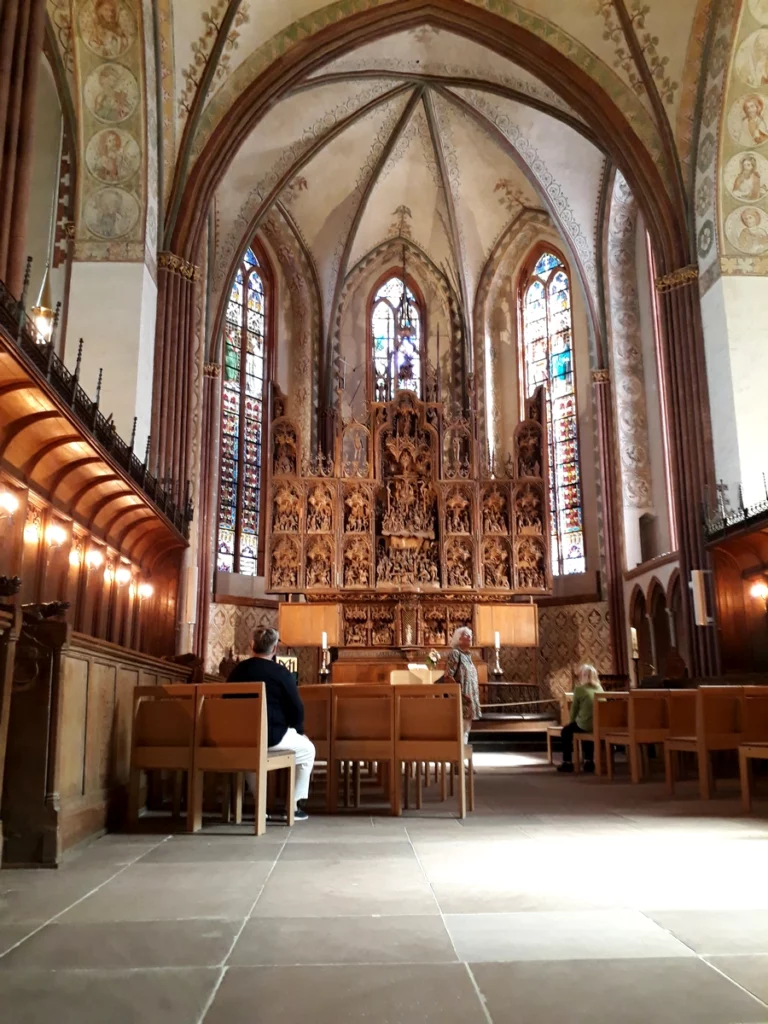
The portal, preserved from the beginning of construction – 1180.
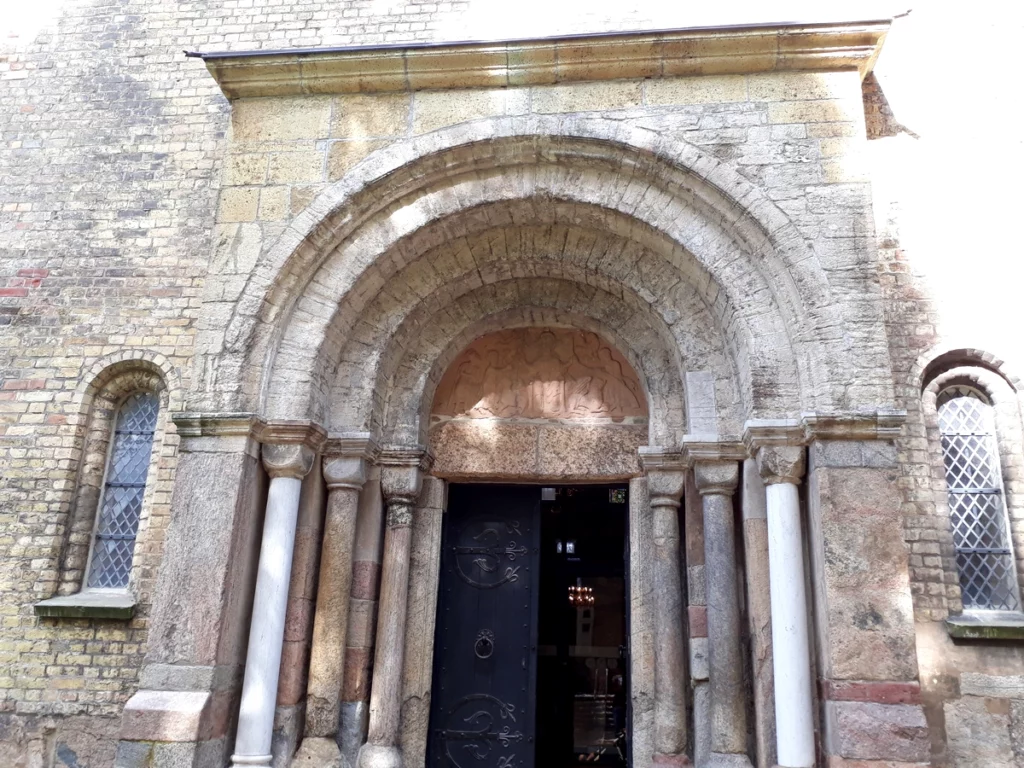
Another interesting part of the church – the cloister, which is called Schwahl here – cannot be easily seen: it is shown only with a guided tour and in December during the market.
You can climb the stairs to the tower. The views are good, but the cloudy glass gets in the way.
Holm village
From the cathedral we go along the old streets to the former fishing village of Holm. The Holm village was built on an island, on stilts. It was connected to the city relatively recently, in the 20th century.
The fishermen of Holm, with the permission of King Christian 1, had the exclusive right to fish between Schleswig and Arnis, and this, by the way, is almost the entire bay (Arnis not far from Cappeln).
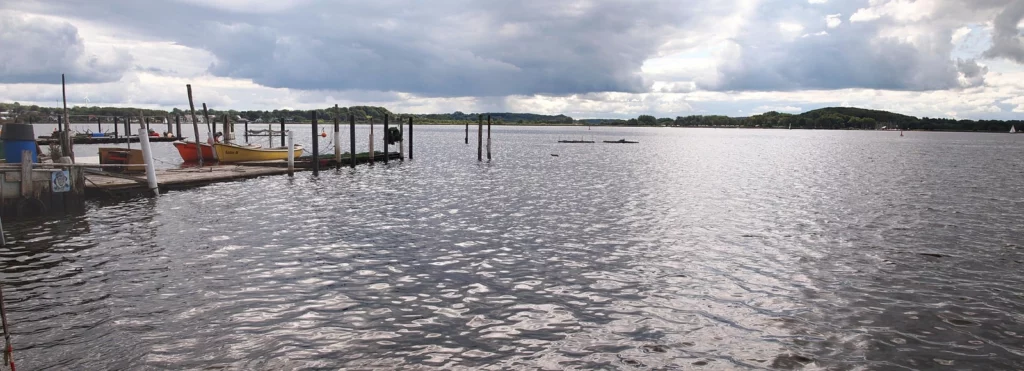
In the center of the Holm village there is a chapel and a cemetery.

Now Holm is the most tourist place in the city. In addition to small houses and clean streets with roses, you can also see the village museum.
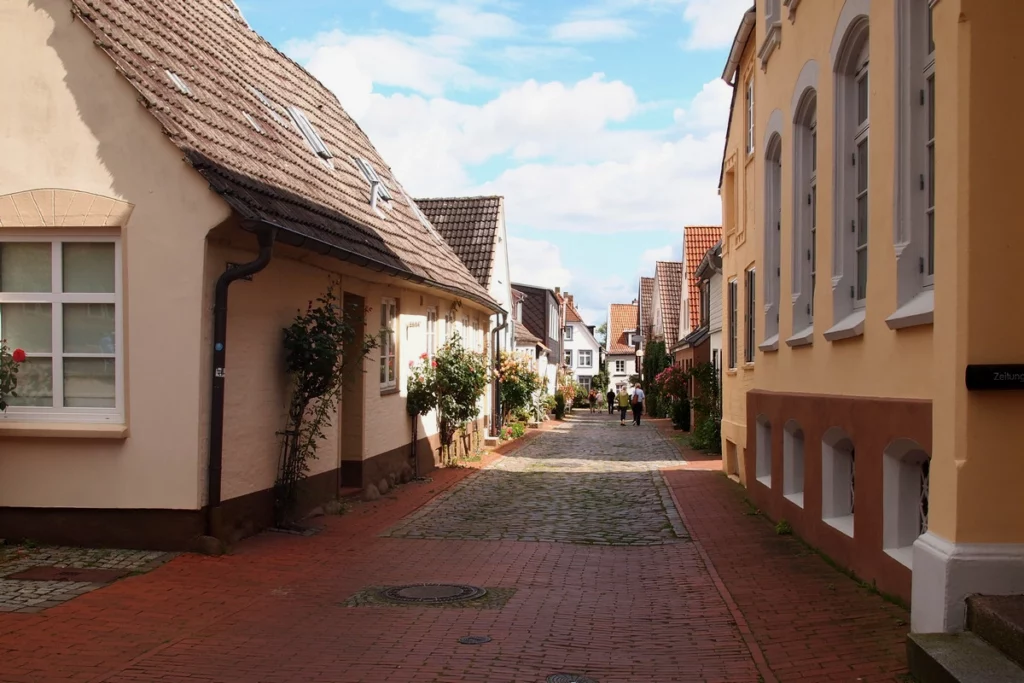

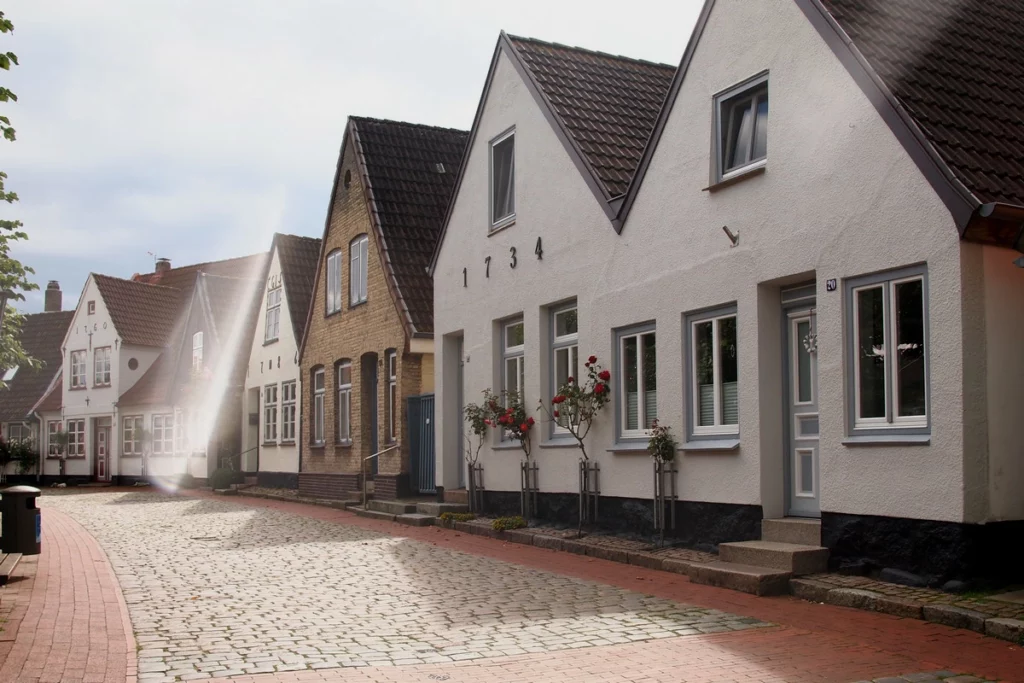
A little further along the shore is the best preserved of the Schleswig monasteries, St Johannis. It is surrounded by a powerful wall. There is a Bible center and a Bible garden here. The monastery hosts exhibitions and concerts.
The linden alley in front of the monastery is also protected as a historical monument.

If you are in the city for a long time and have extra time, you can also visit the city museum (located even further than the palace, on the other side). In addition to historical exhibits, they offer an exhibition of Teddy bears.
But the main museum in Schleswig is not a palace or a city museum, but a Viking settlement.
Viking city Haithabu (Hedeby) and Danevirke fortifications
The Viking settlement of Haithabu (Hedeby) and the Danevirke fortifications (Danewerk) are included in the UNESCO list. The museum is located not near the city center (5.5 km).
How to get to Hedeby:
From Schleswig station take bus 1 or 720. From Schleswig station you can also walk.
From Eckernförde station – bus 720
A visit to the museum can be reduced to a two-hour walk, or you can go for the whole day to see the fortifications and stones with runes. There are also cycling routes.
Parts of the fortifications are indicated by blue arrows.
Stones with runes – crimson arrows.
If you don’t see the map, turn on advertising and cookies (round sign at the bottom left).
Let’s take a look at the entire fortification system:
1 – in the west in the city of Hollingstedt, the Vikings reloaded goods coming from the North Sea along the Treene River.
2 – the oldest part of the Krummwall fortifications. The further west you go, the worse it is preserved
3 – beginning of the central part of the Danevirke fortifications (Hauptwall)
4 – in the village of Danewerk there is a museum and archaeological park. Here you can see the base of the wall made of stone.
5 – Hedeby (Haithabu) Open Air Museum and surrounding rampart
6 – Museum Hedeby
Schleswig map
The Hedeby museum complex near Schleswig consists of two parts:
small archaeological museum 6 (closer to the parking lot, 5 minutes walk)
reconstruction of settlement 5 (further from the parking lot, 20 minutes walk, most of the way is a unpaved road)
In the museum they will tell you about the Viking trading settlement, show you stones with runes, a small number of archaeological finds, a boat, jewelry, and tools. There are not very many exhibits, but this is compensated by the extensive multimedia component. If you stand in front of a stone with runes, at the same time line by line is highlighted on the screen and a translation is given. Actors in historical costumes are shown on screens next to the boat. And so on.
On the road from the museum to the settlement you will come across the beginning of the fortifications – a circular rampart around Hedeby. Be sure to climb the wall.

According to the plans for the reconstruction of the settlement, the entire space inside the rampart (what is in the photo below) was built up – that is, it was practically a city (2 thousand inhabitants). The wall is also quite large (comparison people on the left).


We approach the museum.
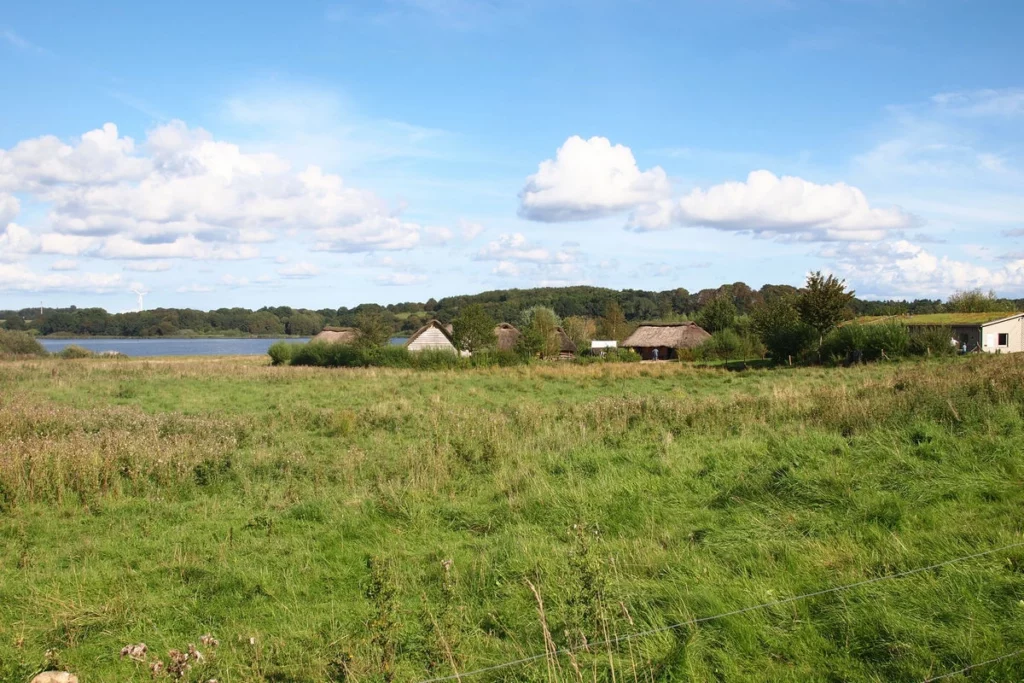
Obviously, if we are talking about the beginning of the Middle Ages, the houses will be simple and the contents primitive.
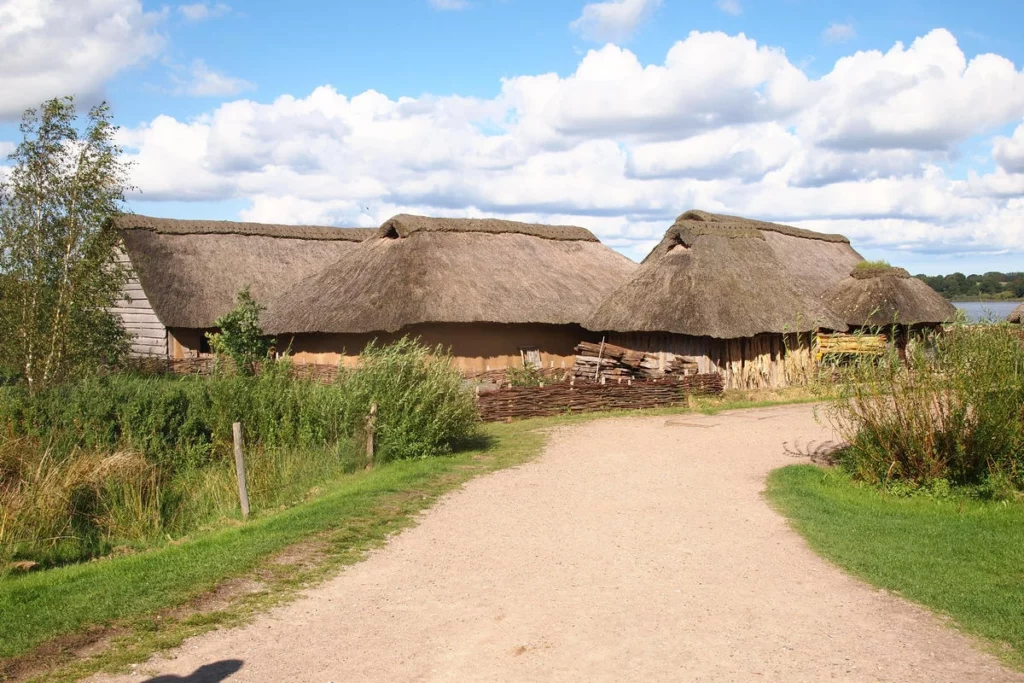
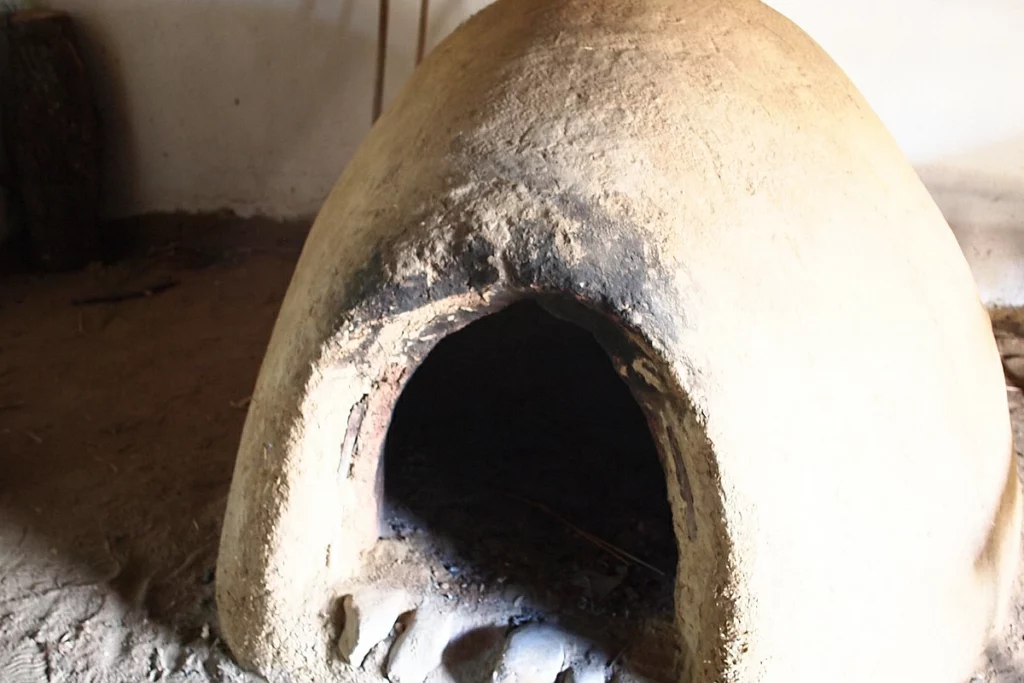
Read more about Sly, Kappeln and Eckernförde: Baltic Sea. Kappeln, Eckernförde, Sly Firth and everything in between
Travemünde – what to do
Lübeck old town
Wadden Sea Schleswig-Holstein: Büsum, Husum, Friedrichstadt
Eiderstedt Peninsula. Sankt Peter Ording
Luneburg Heath. Schneverdingen
Tourist Attractions Schleswig Holstein map
Bremerhaven attractions
North sea Germany vacation. Things to do
Do you enjoy the site without cookies? This means that I work for you at my own expense.
Perhaps you would like to support my work here.
Or change your cookie settings here. I don’t use personalized ads

